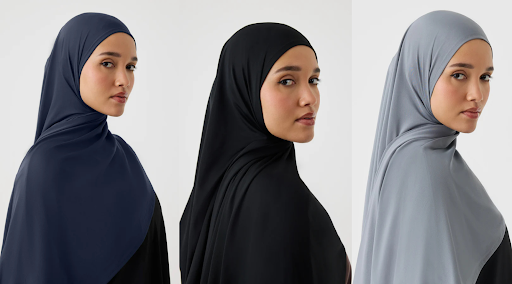Eco-Friendly Practices for Couture Dry Cleaning & Luxury Garments

In this dazzling world of high fashion, intricate designs and luxurious fabrics have gained supremacy. The art of garment care has long been a whispered secret among those who value preservation and perfection. However, as global awareness of environmental impact grows, everyone has this critical question: whether couture dry cleaning practices align with sustainable practices or not.
Well, the answer is yes, and our couture dry cleaning practices align with an eco-friendly environment. Traditional couture garment care practices, including dry cleaning, rely on harsh chemicals and a larger carbon footprint. The business is undergoing a dramatic change, from sustainable packaging to cutting-edge cleaning technology, demonstrating that luxury and environmental responsibility are not mutually exclusive.
By adopting these more sustainable options, we can reduce waste, improve the environment, and guarantee that beautiful fabrics will be appreciated for many years to come. In this guide, we’ll explore sustainable techniques, offer helpful advice for at-home cleaning, and demonstrate how luxury dry cleaning services are pushing for a sustainable future.
Understanding Sustainable Fabric Care
Sustainable fabric care defines how we approach garment washing, prioritizing environmental health while maintaining meticulous preservation. At its core, it promotes operations that are water and energy-efficient, limiting resource usage.
This involves using advanced machinery and procedures that require less water per cycle and consume less electricity, resulting in a reduced carbon footprint. A key differentiator is the use of biodegradable solvents, which break down organically and safely in the environment, avoiding the toxic residues associated with conventional dry cleaning chemicals.
This approach is especially critical for couture dry cleaning and high-end garments. Opting for luxury dry cleaning services that embrace sustainability ensures these treasured pieces receive the care they need without compromising environmental values.
Green Cleaning Methods Gaining Popularity
Green cleaning methods have now gained popularity due to their enhanced results and reduced carbon footprint. Multiple sustainable methods are used according to the garment. Let’s discuss some of the top-notch greenwashing methods:
Wet Cleaning Technology
- A water-based method is ideal for delicate fabrics used in couture dry cleaning.
- Uses gentle, biodegradable detergents that are safe for sensitive materials.
- Garments are pre-treated with mild, eco-safe solutions to prevent stains.
- Machines control temperature, moisture, and agitation to prevent damage.
- Specialized pressing and reshaping equipment preserves garment structure.
- No harsh chemicals, such as perchloroethylene, are used.
- Ideal for silks, wools, and high-end pieces in designer garment cleaning.
- Recommended by many eco-friendly dry cleaners for its fabric-safe results.
Liquid CO2 Cleaning
- The luxury dry cleaning services use pressurized carbon dioxide instead of water.
- CO₂ is turned into a liquid and acts as the cleaning agent.
- Detergents are added to help lift dirt and oils from the fabric.
- Clothes are placed in a sealed chamber and cleaned under controlled pressure.
- After cleaning, CO₂ is converted to a gas and captured for reuse.
- Leaves no toxic residue on garments, making it a safe choice.
- Reduces water and energy consumption significantly.
Silicone-Based Solvents (e.g., GreenEarth®)
- This method uses silicone-based fluid for couture dry cleaning instead of petrochemicals.
- GreenEarth is odorless, non-toxic, and gentle on delicate fabrics.
- Garments are soaked in the solvent that lifts dirt without harsh effects.
- Stains are pre-treated with biodegradable agents.
- The solvent doesn’t shrink or fade fine materials.
- After cleaning, garments are gently dried and steamed to ensure they are thoroughly dry.
- The silicone solvent breaks down into sand, water, and CO₂, which is entirely safe.
Recycled and Reusable Packaging
- Many couture dry cleaning services now offer sustainable packaging options.
- Reusable garment bags reduce the need for single-use plastic.
- Hangers made from recycled materials are used and collected.
- Packaging is designed to be returned and reused for multiple cycles.
- Kraft paper or compostable wraps replace plastic covers.
- Branding is maintained without compromising sustainability.
- Customers are encouraged to bring back packaging for circular use.
Best Practices for At-Home Garment Care
It’s essential to understand and follow at-home garment care best practices for several reasons that extend beyond simply keeping your garments clean. First of all, it greatly extends the life of your clothing. Your favorite pieces will look their best for a lot longer if you use the proper washing, drying, and storage methods to avoid premature wear and tear, fading, stretching, and pilling.
Because fewer replacements are required, this results in cost savings. Secondly, it directly contributes to environmental sustainability. Choosing eco-friendly detergents, air-drying, washing less, and using the correct water temperatures all help your home use less electricity and water, which in turn lowers your carbon footprint. Here are the two standard practices for at-home garment care:
Airing and Spot Cleaning
- Gently air garments after each wear to release odors.
- Hang in a shaded, well-ventilated area away from sunlight.
- Avoid over-washing delicate or couture pieces.
- Use a damp cloth or mild soap to spot clean stains immediately.
- Always do a patch test of cleaning products on a hidden area first.
- Use a soft brush or sponge for delicate fabrics.
- Let garments dry completely before returning them to storage.
Proper Storage for Longevity
- Store in breathable garment bags, not plastic.
- Keep in a cool, dry place to avoid mildew and fading.
- Use padded or shaped hangers for items with a structured shape.
- Fold knits and heavy fabrics to prevent stretching.
- Place acid-free tissue between folds to prevent creasing.
- Avoid overcrowding to let fabrics breathe.
- Use cedar blocks or lavender sachets to naturally repel pests.
- Helps extend the life of pieces requiring couture dry cleaning.
How Luxury Dry Cleaners Can Lead Sustainability
For expensive products like couture, luxury dry cleaners are uniquely positioned to lead the way in sustainability within the clothing care sector. They can drastically reduce their environmental impact by purchasing and implementing cutting-edge green technologies, such as liquid CO2 systems, wet cleaning, and sophisticated silicone-based solvents (like GreenEarth).
Moreover, thorough training of employees in these environmentally friendly techniques guarantees that even the most delicate couture garments receive superb care without the use of dangerous conventional chemicals.
Beyond internal practices, leading couture dry cleaning establishments can educate their discerning clientele on the benefits of sustainable choices, fostering a collective commitment to preserving both exquisite garments and the planet.
Wrap Up!
In conclusion, adopting eco-friendly practices, even employed by the restoration specialists in couture dry cleaning, is crucial for protecting both garments and the planet. These practices are a significant shift towards a sustainable future. Several options have been introduced in the cleaning process, including wet cleaning, CO2 technologies, the conscientious use of silicone-based solvents, and the use of recycled packaging.
Therefore, this eco-friendly practice of couture garment care is not just a trend; it is a significant step towards a better future. By adopting these methods, alongside diligent at-home care, we can significantly reduce our environmental footprint while preserving the exquisite quality and longevity of our most cherished couture garments.






